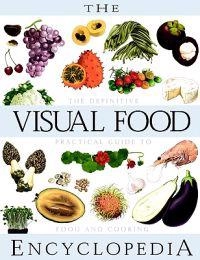What does a tree tomato look like? Whats the difference between a turnip and a rutabaga? Where does malanga come from? How do you trim an artichoke bottom? The Visual Food Encyclopedia answers all these food questions ? and thousands more.The Visual Food Encyclopedia is the cooks companion in the market and the kitchen, illustrating and explaining everything other cookbooks assume you already know. It takes you by the hand and, with a no-nonsense approach, tells you how to look for freshness, when to buy each ingredient at its peak, how to store it once you get it home, and the best methods of preparation and cooking.This extensive guide covers more than 1,000 ingredients, including: ?70 different kinds of vegetables?63 varieties of fruits?37 types of meat?62 species of fish?34 different cereals and grains?47 herbs, spices and condiments?30 kinds of cheese and milk products?Varieties of nuts and seeds, mushrooms, seaweed, sugars, fat and oils, and coffee and tea.In large part, the explaining is done with pictures, over 1,200 of them. The state-of-the-art computer images are so clear and richly colored, youll want to eat the food right off the page. And because you just have to see how some things are done, like cutting a chicken into serving pieces, basic techniques are clearly illustrated with original step-by-step photographs.This unique book doesnt ignore health benefits either. All the entries include nutritional highlights. A glossary of terms along with a comprehensive index of the technical and most commonly known names for each entry is provided at the end of the book. Plus, while this is an encyclopedia, not a cookbook, serving ideas and traditional recipes using selected ingredients are featured/From the novice cook to the experienced chef, there are timeless lessons to be learned from The Visual Food Encyclopedia
Åtkomstkoder och digitalt tilläggsmaterial garanteras inte med begagnade böcker





















